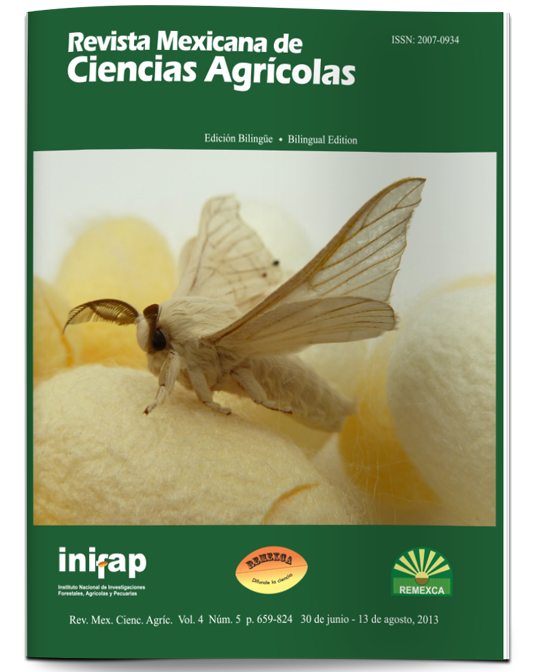Comparison of hybrid and native corns with respect to physical quality, content of phenols and aflatoxins
DOI:
https://doi.org/10.29312/remexca.v4i5.1175Keywords:
grain, hybrid, native, phenolic compounds, physical qualityAbstract
The concern for the quality and safety of the food consumed in Mexico has been increasing in recent times. Corn has a wide variety of genotypes, which in Mexico are consumed mainly as dough and tortillas. The aim of this study was to compare fifteen different genotypes of corns with respect to their physical quality, soluble phenolic content and af latoxin contamination. The commercial hybrid corn varieties analyzed were: panther, leopard, bear, 30T26, 30G40 from the state of Hidalgo; Cronos and DK2060 from the state of Morelos; Puma 1167, H516 and H519 from the State of Mexico; and five varieties native to Puebla, Toluca, Sinaloa, Michoacán and the State of Mexico. Soluble phenol extracts were analyzed by UV-visible spectrophotometry. The hectoliter weight (HW) and the hundred grains weight (HGW) were determined according to NMX-FF-034, while the quantification of aflatoxins was determined by enzyme immunoassay (ELISA).The hundred grains weight ranged from 18 to 51 g. The phenolic content ranged from 100 to 370 μg kg-1, the hectoliter weight from 49 to 80 kg hL-1 and the total af latoxin content from 2 to 13 μg kg-1. 25% of the corns evaluated meet the established minimum density for marketing (dough and tortillas), while the commercial corn hybrids panther, bear and DK2060, from the states of Hidalgo and Morelos, had the highest levels of aflatoxin contamination. The native corns had the highest phenolic content, implying a natural protection against storage pests.
Downloads
Downloads
Published
How to Cite
Issue
Section
License
The authors who publish in Revista Mexicana de Ciencias Agrícolas accept the following conditions:
In accordance with copyright laws, Revista Mexicana de Ciencias Agrícolas recognizes and respects the authors’ moral right and ownership of property rights which will be transferred to the journal for dissemination in open access. Invariably, all the authors have to sign a letter of transfer of property rights and of originality of the article to Instituto Nacional de Investigaciones Forestales, Agrícolas y Pecuarias (INIFAP) [National Institute of Forestry, Agricultural and Livestock Research]. The author(s) must pay a fee for the reception of articles before proceeding to editorial review.
All the texts published by Revista Mexicana de Ciencias Agrícolas —with no exception— are distributed under a Creative Commons License Attribution-NonCommercial 4.0 International (CC BY-NC 4.0), which allows third parties to use the publication as long as the work’s authorship and its first publication in this journal are mentioned.
The author(s) can enter into independent and additional contractual agreements for the nonexclusive distribution of the version of the article published in Revista Mexicana de Ciencias Agrícolas (for example include it into an institutional repository or publish it in a book) as long as it is clearly and explicitly indicated that the work was published for the first time in Revista Mexicana de Ciencias Agrícolas.
For all the above, the authors shall send the Letter-transfer of Property Rights for the first publication duly filled in and signed by the author(s). This form must be sent as a PDF file to: revista_atm@yahoo.com.mx; cienciasagricola@inifap.gob.mx; remexca2017@gmail.
This work is licensed under a Creative Commons Attribution-Noncommercial 4.0 International license.



